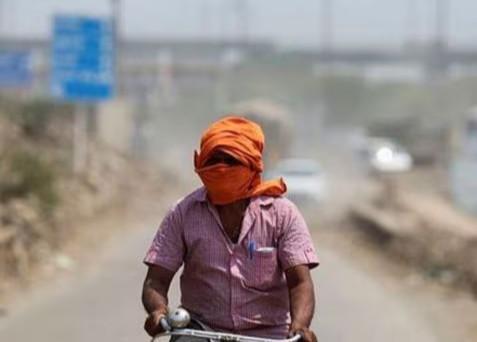
Extreme Heat Endangering Health & Productivity of Workers: Report
The scorching heatwaves sweeping across the globe are not only wreaking havoc on our daily lives but also posing a significant threat to the health and productivity of workers. A recent report by the World Health Organisation (WHO) and the World Meteorological Organisation (WMO) has highlighted the alarming consequences of extreme heat on workers, particularly those in manual occupations and vulnerable populations.
According to the report, worker productivity drops by 2-3% for every degree above 20°C. This may seem like a small percentage, but when you consider the cumulative effect of such a drop in productivity, it can have a substantial impact on businesses and economies. Moreover, the report has identified certain groups of workers who are more susceptible to the dangers of extreme heat.
Manual Workers in Agriculture and Construction Sectors at Risk
Manual workers in agriculture and construction sectors are particularly at risk due to the nature of their work. They are often exposed to direct sunlight and high temperatures for extended periods, increasing their risk of heat-related illnesses. The report emphasizes that these workers need to take extra precautions to protect themselves from the heat.
Heat exhaustion, heatstroke, and dehydration are some of the common heat-related illnesses that workers are prone to. Heat exhaustion can cause symptoms such as dizziness, nausea, and headaches, while heatstroke can lead to more severe symptoms like confusion, seizures, and even death. Dehydration is another common issue, which can cause headaches, fatigue, and in severe cases, organ failure.
Vulnerable Populations at Risk
Besides manual workers, vulnerable populations such as children and the elderly are also at risk due to their physiological limitations. Children, in particular, are more susceptible to heat-related illnesses due to their smaller body size and underdeveloped thermoregulatory mechanisms. The elderly, on the other hand, may experience decreased sweat production and reduced blood flow to the skin, making them more prone to heat-related illnesses.
In developing countries, these vulnerable populations are often more exposed to extreme heat due to inadequate housing, lack of access to healthcare services, and limited resources. The report highlights the need for targeted interventions to protect these populations from the heat.
Health Risks Associated with Extreme Heat
The report emphasizes that extreme heat can lead to a range of health risks, including:
- Heatstroke: A life-threatening condition that occurs when the body’s temperature regulation system is overwhelmed, leading to a body temperature of 40°C (104°F) or higher.
- Dehydration: A condition that occurs when the body loses more fluids than it takes in, leading to decreased blood volume and reduced blood pressure.
- Kidney Dysfunction: Prolonged exposure to extreme heat can lead to kidney damage and even kidney failure.
- Other Health Risks: Extreme heat can also increase the risk of other health problems, such as cardiovascular disease, respiratory issues, and mental health concerns.
Mitigating the Consequences of Extreme Heat
The report emphasizes the need for urgent action to mitigate the consequences of extreme heat on workers and vulnerable populations. Some of the recommended measures include:
- Providing Cooling Measures: Employers should provide cooling measures such as air-conditioned workspaces, shade, and cooling breaks to workers.
- Encouraging Hydration: Workers should be encouraged to drink plenty of water and other fluids to stay hydrated.
- Adopting Heat-Related Policies: Employers should adopt heat-related policies, such as flexible working hours and job rotation, to minimize the impact of extreme heat on workers.
- Improving Housing and Infrastructure: Developing countries should prioritize improving housing and infrastructure to provide better protection from extreme heat for vulnerable populations.
Conclusion
The report by WHO and WMO highlights the alarming consequences of extreme heat on workers and vulnerable populations. It is essential that employers, governments, and individuals take immediate action to mitigate the risks associated with extreme heat. By adopting simple measures such as providing cooling measures, encouraging hydration, and improving housing and infrastructure, we can reduce the impact of extreme heat on our health and productivity.
Source: https://repository.inshorts.com/articles/en/PTI/45d9bd2d-ff57-417c-9e5f-831344bb34b0






